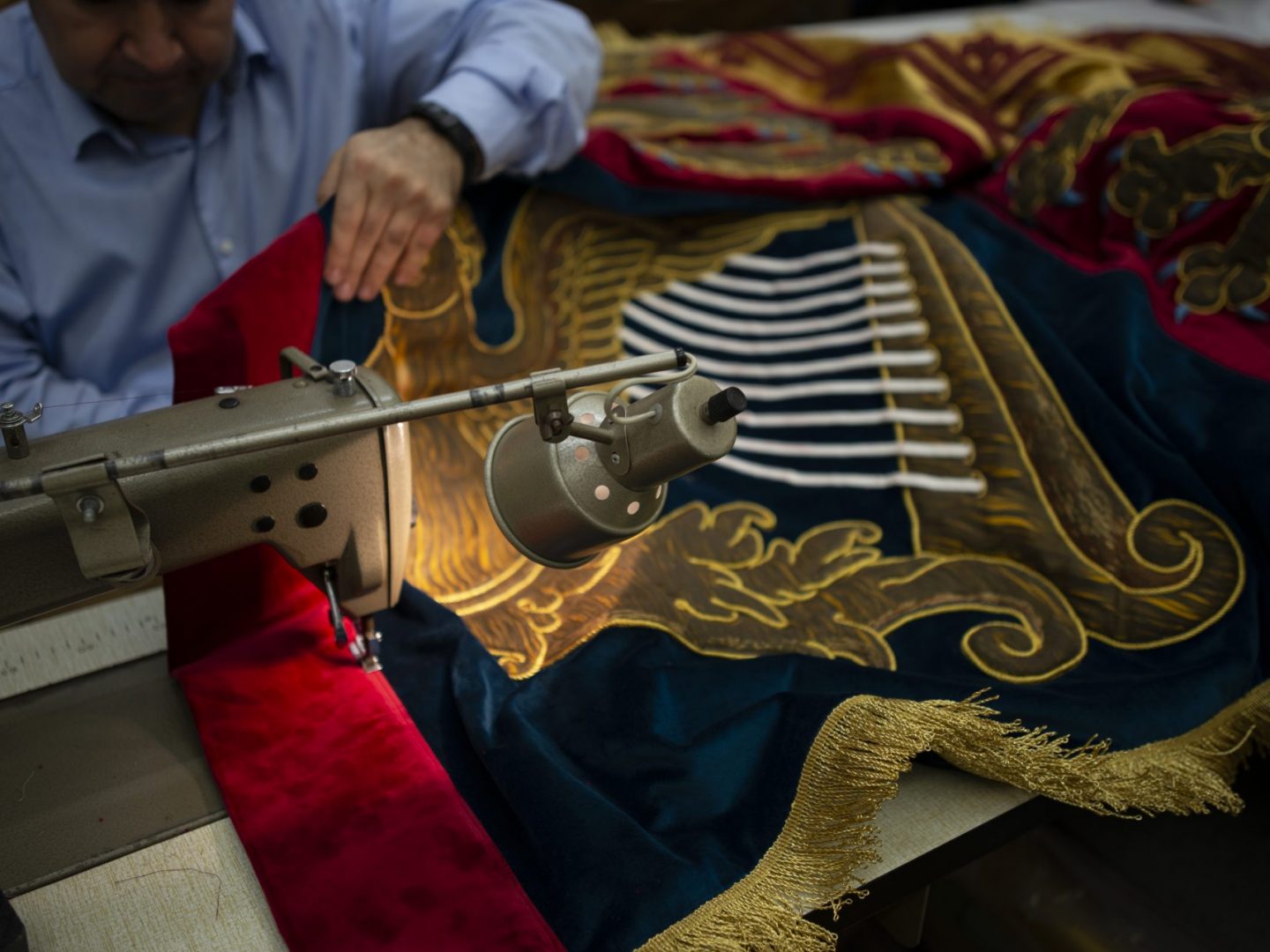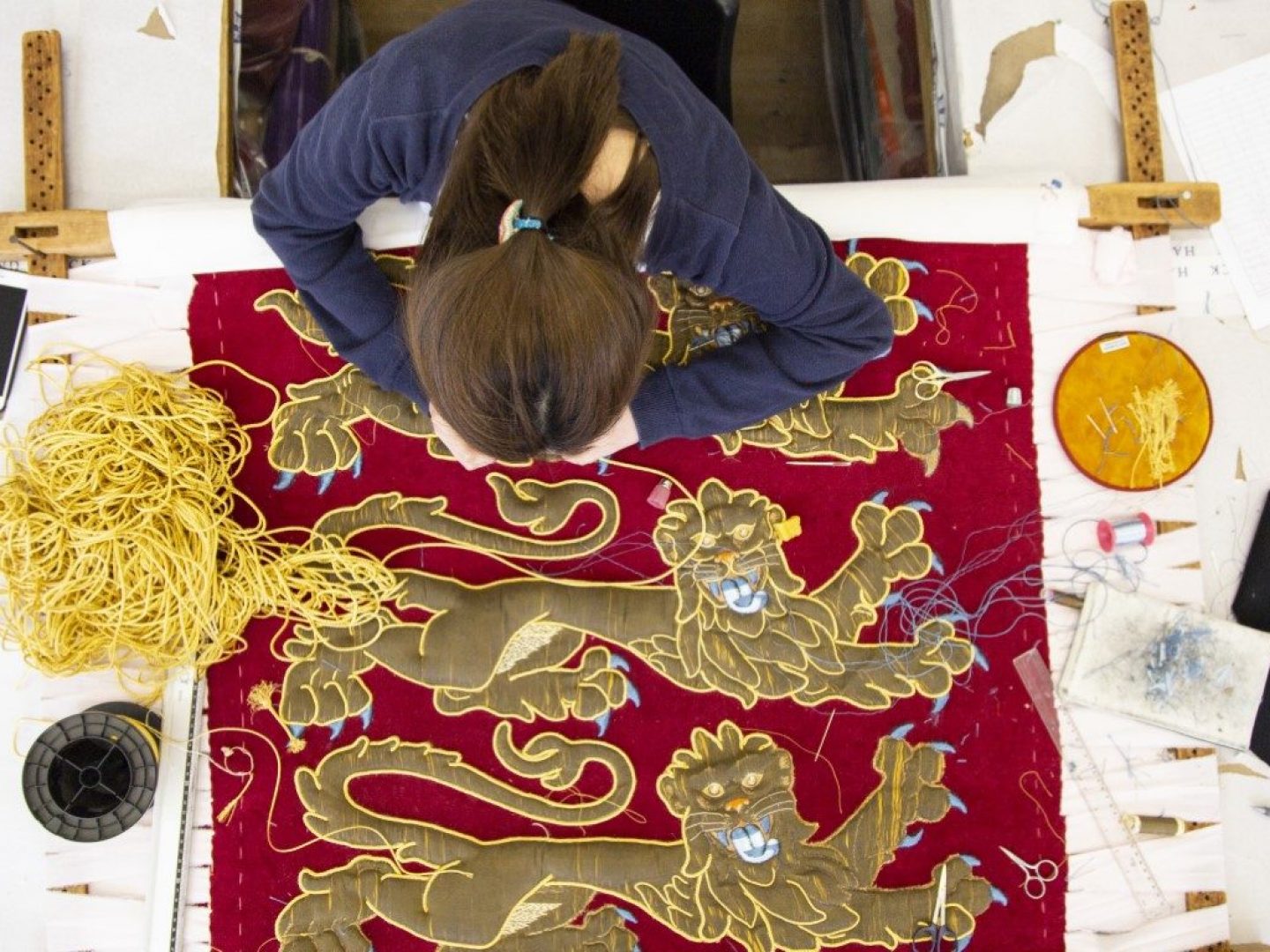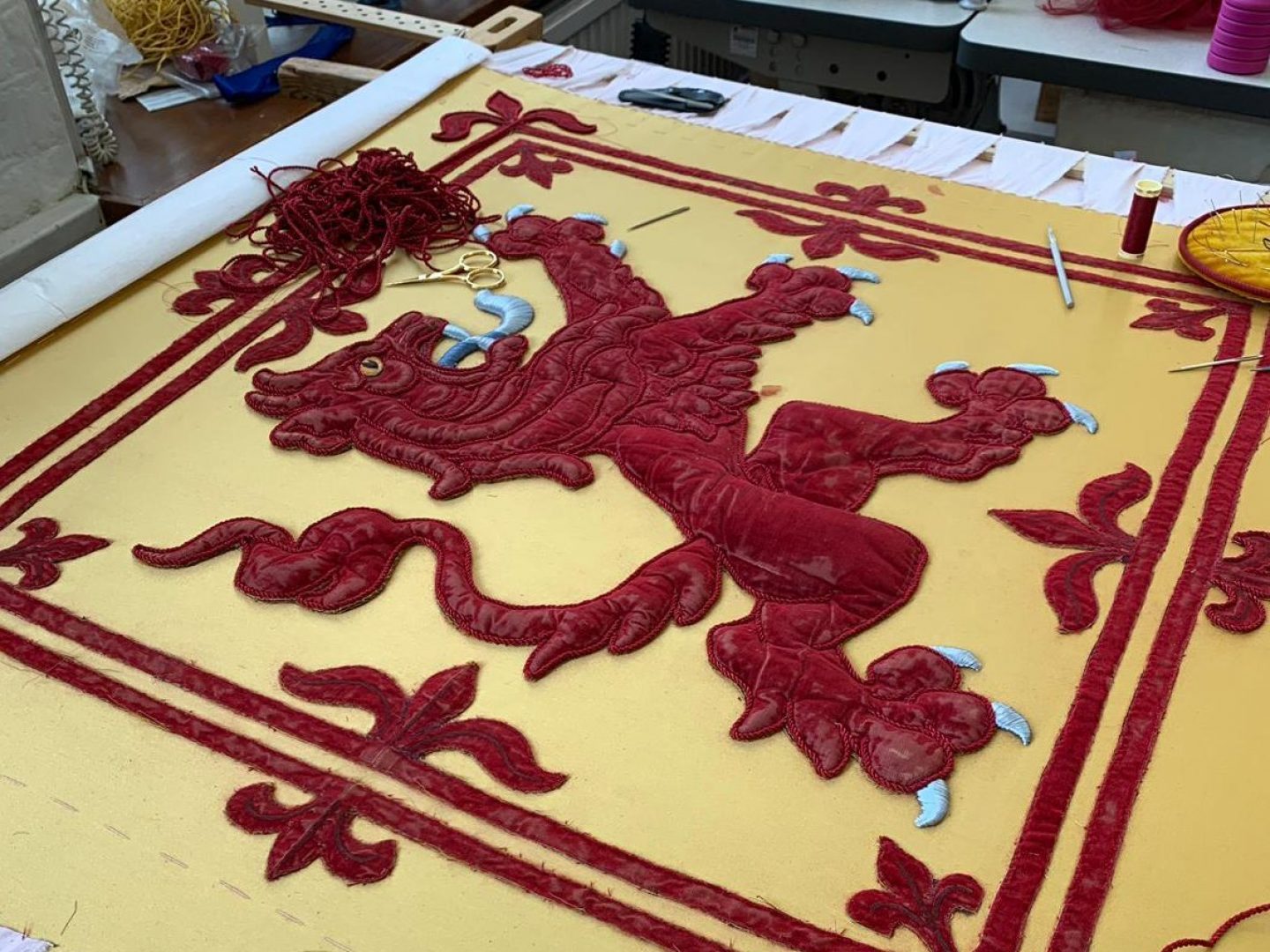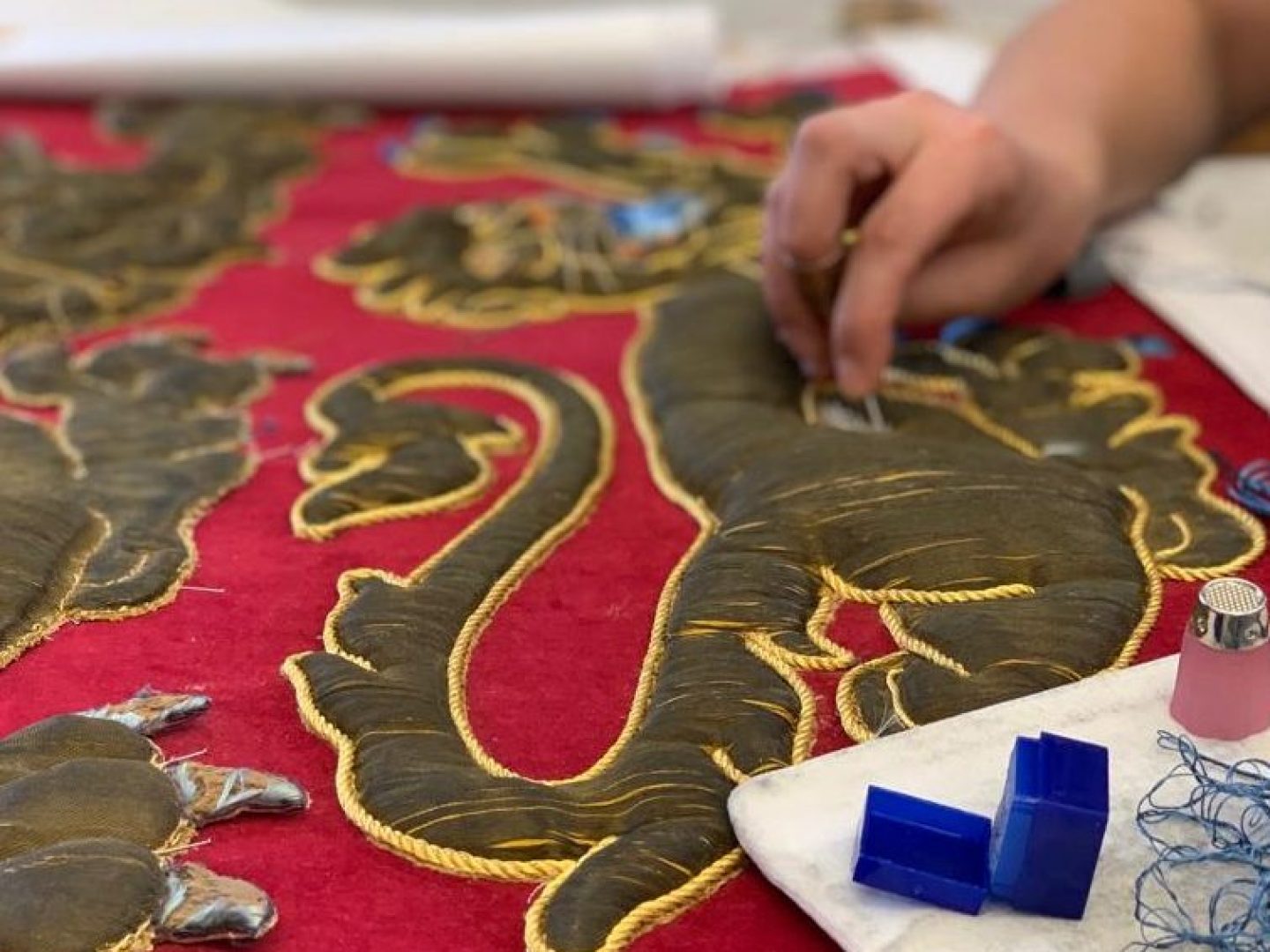

Hand & Lock were commissioned to complete a major restoration of two embroidered banners that date from the start of the 20th century. A project of this magnitude begins with a comprehensive study of the object and diligent research into the embroidery techniques and materials used. Then, an understanding of the object’s long history must be undertaken to appreciate why the preservation and restoration must be undertaken. When a company like Hand & Lock engages in the restoration of a precious historic textile they become part of that long object’s history. Woven into every fabric is the history of all the skilled craftsmen and women who have come into contact with the piece. Here we share the story of one such restoration revealing the object’s significance and the stages involved in restoring its former grandeur.
In 1901, at the start of the short reign of King Edward the VII, the Royal School of Needlework completed work on the Monarch’s Garter Banner, a large embroidered panel destined to hang over the Sovereign’s stall in St George’s Chapel in the grounds of Windsor Castle. The banner measured 1.5 metres wide, 1.5 metres tall and divided into four quarters known as quadrants. Each quadrant contained motifs and heraldry associated with the Monarch with two of the quadrants containing three lions stacked above each other – the traditional coat of arms of the Kings of England, perhaps now more popularly associated with the three lions of the England football kit. In this arrangement their pose is described as a ‘Passant Guardant Attitude’ which is heraldry terminology for striding while looking outward. The lions were originally embroidered with silk-shading,
cloth of gold and edged in cord before being appliquéd onto a rich red velvet. The motifs in the other two quadrants were appliquéd over a regal blue velvet and a cloth of gold background. The Royal Arms of Ireland in the form of a winged-female harp in one, and the royal arms of Scotland in the form of a single lion standing upright in profile with his forepaws raised in what is described as a ‘rampant attitude’. The full design would typically be featured at the centre of the Royal Arms of Great Britain and is a commonly used heraldic arrangement that can be seen in crests, on flags and even worn by an officer of arms in the form of his medieval herald’s tabard. This enduring design, modified in 1952 to remove the winged female harp and replace her with a plain Gaelic harp, can be seen at Coronations, at the state opening of Parliament and on the flagpole of Buckingham Palace when the Monarch is in residence.




